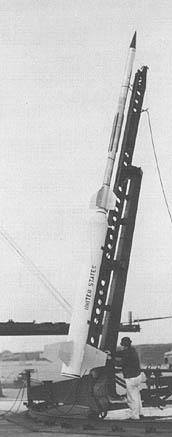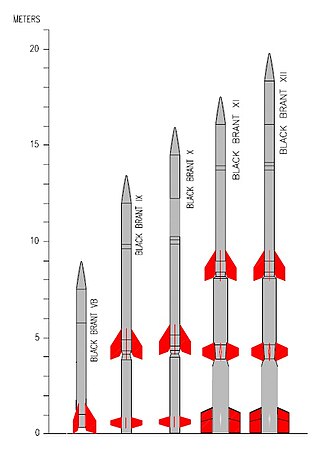
The Black Brant is a family of Canadian-designed sounding rockets originally built by Bristol Aerospace, since absorbed by Magellan Aerospace in Winnipeg, Manitoba. Over 800 Black Brants of various versions have been launched since they were first produced in 1961, and the type remains one of the most popular sounding rockets. They have been repeatedly used by the Canadian Space Agency and NASA.
The Vanguard rocket was intended to be the first launch vehicle the United States would use to place a satellite into orbit. Instead, the Sputnik crisis caused by the surprise launch of Sputnik 1 led the U.S., after the failure of Vanguard TV-3, to quickly orbit the Explorer 1 satellite using a Juno I rocket, making Vanguard 1 the second successful U.S. orbital launch.

The Lockheed X-7 was an American unmanned test bed of the 1950s for ramjet engines and missile guidance technology. It was the basis for the later Lockheed AQM-60 Kingfisher, a system used to test American air defenses against nuclear missile attack.

The Aerojet General X-8 was an unguided, spin-stabilized sounding rocket designed to launch a 150 lb (68 kg) payload to 200,000 feet (61.0 km). The X-8 was a version of the prolific Aerobee rocket family.
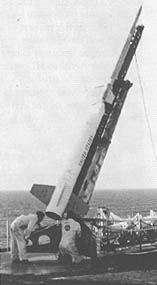
The Nike Apache, also known as Argo B-13, was a two-stage sounding rocket developed by Aerolab, later Atlantic Research, for use by the United States Air Force and NASA. It became the standard NASA sounding rocket and was launched over 600 times between 1961 and 1978.
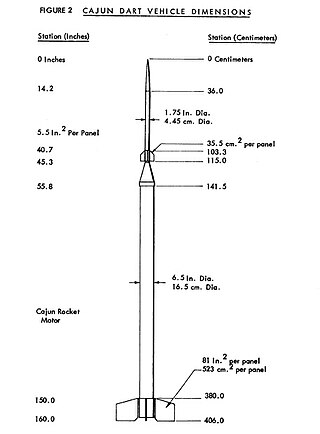
Cajun Dart is the designation of an American sounding rocket. The Cajun Dart was used 87 times between 1964 and 1970. The Cajun rocket motor was developed from Deacon.
Nike Iroquois is the designation of a two-stage American sounding rocket. The Nike Iroquois was launched 213 times between 1964 and 1978. The maximum flight height of the Nike Iroquois amounts to 290 km (950,000 ft), the takeoff thrust 48,800 lbf (217 kN), the takeoff weight 700 kg and the length 8.00 m.
Nike Hydac is the designation of an American sounding rocket with two stages, based upon the Nike Ajax booster. The Nike Hydac was launched 87 times from many missile sites. Such sites were White Sands Missile Range, Poker Flat Research Range, Kwajalein Missile Range, Cassino Site - Rio Grande Airport, Brazil, and from North Truro Air Force Station in Massachusetts during Operation Have Horn in 1969.

Arcas was the designation of an American sounding rocket, developed by the Atlantic Research Corp., Alexandria, Va.

ASP, (Atmospheric Sounding Projectile is the designation of an American sounding rocket family. ASP-I was used to sample nuclear explosions and resultant clouds The ASP was the fastest single stage sounding rocket when developed. The Asp was manufactured by Cooper Development Corporation, California. The solid propellant motor was made by Grand Central Rocket company.

The MQM-42 was a supersonic target drone developed by North American Aviation. Developed in two subvariants, Redhead and Roadrunner, it was used by the United States Army in the 1960s and 1970s.

The XMQR-13A Ballistic Missile Target System (BMTS) was an unguided target rocket developed by the United States Army during the 1960s, intended for use in the development of missile defense systems. Utilising off-the-shelf parts in four different configurations, the BMTS was utilised in a series of launches in the late 1960s supporting tests of several missile systems.
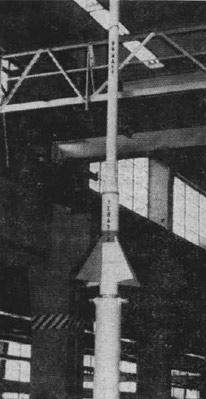
Terasca, or Terrier-ASROC-Cajun, was an American three-stage sounding rocket developed and launched by the United States Navy. Derived from a combination of the Terrier, ASROC and Cajun rockets, three launches were attempted during 1959, but only one was successful.
The Cajun was an American sounding rocket developed during the 1950s. It was extensively used for scientific experiments by NASA and the United States military between 1956 and 1976.
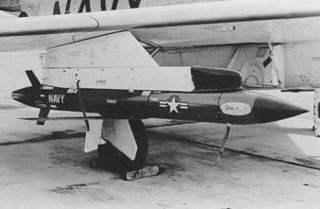
The Temco XKDT Teal was an American rocket-propelled, high-performance target drone, built by Temco Aircraft for evaluation by the United States Navy in the late 1950s. Production was not proceeded with following evaluation of the type.

The Radioplane XKD4R, known by the company designation RP-70, was an American target drone developed by the Radioplane Division of the Northrop Corporation. Although it was not produced in quantity, it was developed into the successful AQM-38.
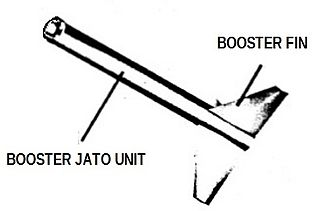
The Nike stage or Nike booster, a solid fuel rocket motor, was created by Hercules Aerospace for the Nike Ajax (M5) Nike Hercules (M5E1). It was developed for use as the first stage of the Nike Ajax and Nike Hercules missiles as part of Project Nike.

The Aerojet SD-2 Overseer was an unmanned aerial vehicle developed by Aerojet General and Rheem Manufacturing Co. in the late 1950s for use by the United States Army. Built in limited numbers, it never saw operational service.

The Republic SD-3 Snooper was an early reconnaissance drone developed by Republic Aviation for the United States Army. It was evaluated by the Army Signal Corps in 1959, but did not enter operational service.
Nike Yardbird was an American sounding rocket with two stages, based upon the Nike Hercules M5E1 booster and a Thiokol TE-289 Yardbird upper stage. Yardbird was an improved Thiokol XM-19 motor. The Nike Yardbird was launched 2 times from Wallops Island on Sphere Test aeronomy missions both of which were classified as failures. Information available does not state the reason for the mission failures but Astronautix lists the apogee of both missions as 10 km (6 mi) which is well below the goal of 120 km (70 mi).
